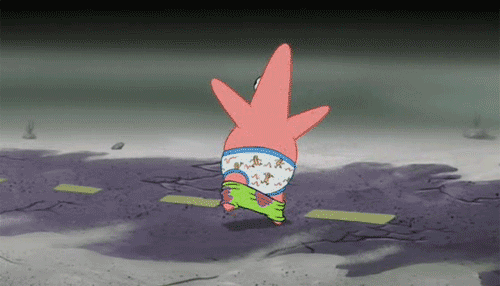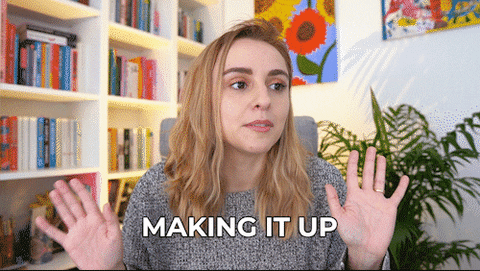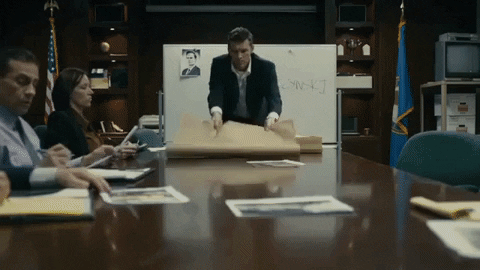
Off the bat, let’s get one thing straight: by pantser, I do not mean someone who pulls someone else’s trousers down. Okay Jasmina, what on Earth do you mean then? I’m talking about writing "by the seat of your pants".
Basically, I’m about to address the age-old debate of ‘to plot or not to plot’ (sorry Hamlet, but that’s actually the question, at least for this article).
It’s time to settle this argument once and for all.

What is a Pantser?
We’ve already covered this briefly, but a pantser is essentially someone who just sits down and starts writing their short story or book, with no planning involved. Whether they see plotting as something that stifles creativity or they just can’t wait to get started with their new project (we’ve all been there), they’re not going to let taking the time to outline their story slow them down.
But wait, there’s more! There are in fact two types of pantsers.
First of all, we have traditional pantsers. They do not plan at all. Jasmina, you just said this above. I know, I know, keep your pants on (see what I did there?). This is important to say because I’m going to define a different type of pantser in a moment.
A traditional pantser will write their first draft without planning any of it – not the characters, the plot, the themes, you name it.

Next up we have non-traditional pantsers. They don’t plan; however, they revise as they go so that the existing work better suits what they come up with on the fly.
So, although they don’t plot, they revise in preparation for future scenes, narrative advancement, and to fill in plot holes.
Pros and Cons of Being a Pantser
Pros:
-
Freedom to create
-
Flexibility
-
Can give the story a more organic feeling
-
The author gets the same sense of surprise as they write as the reader will when they read
Cons:
-
More frequent writer’s block
-
More likely to encounter plot holes
-
Will demand a more intense rewriting process
-
The more organic nature of the book might leave the pantser with more tangential content and uneven pacing
What is a Plotter?
Guys, I’m about to blow your minds. A plotter is someone who – get this – plots their book. WHAT?! I know. Who’d have guessed it? Plotters can spend varying amounts of time in the pre-writing stage, outlining the book, coming up with characters, and world-building. They’re reading the whole recipe before they put their pots on the stove.

Pros and Cons of Being a Plotter
Pros:
-
Knowing where exactly the story is headed
-
Fewer plot holes
-
Easier to circumnavigate writer’s block because you don’t have to come up with the plot as you go
-
Better understanding of the characters, their motivations, and backstories
-
Strong, even pacing
Cons:
-
Can be restrictive as changing one scene can affect everything you’ve already outlined
-
More upfront work
-
The plot might seem too contrived

How to Go from Pantser to Plotter
It seems self-evident to me, from the lists above, that plotting is a much better way to go about writing your book. Sure, some famous authors claim to write their novels without outlining. But plotting your book first will save you a lot of grief in the long run, especially if you’re someone who runs into writer’s block.
However, moving away from pantsing is very hard. Not as hard as giving up chocolate, but it’s not far off. It’s all about habit formation and taking small steps. So, what are these steps?
The first would be implementing what is known as the Flashlight Method of writing.

Consider it a bridge from pantsing to plotting. Rather than cutting out chocolate entirely, you’re having it once a week. By using this method, you don’t have to outline the whole story or novel, just enough scenes to get you through the next chapter.
The idea is simple: outline the part of your novel that you are about to write.
Just like a flashlight, you are only illuminating the nearest area. This way, you don’t come to abrupt halts in the middle of a chapter, uncertain of where to go next and disrupting the narrative flow of your piece. This is an easy way to start plotting your novel without stifling creativity.
Eventually, as you implement the Flashlight Method more and more, you’ll grow so accustomed to plotting that you’ll be able to plot entire novels before you know it! And remember, just because you plot something, doesn’t mean it’s set in stone. You can always go back and revise your outline; having one just means that you set out on your journey of writing with a clear destination.
Want to work with one of our coaches at the Plottery to finally finish your novel? Check out our coaching program below!











